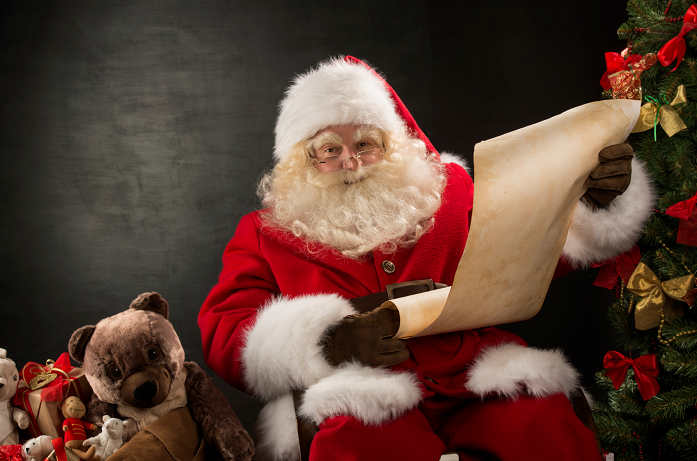Virginia O’Hanlon was just eight years old when she penned a letter to the New York Sun – the response would become the most reprinted editorial in the history of the English language.
In July 1897, little Virginia had just celebrated her birthday when she decided to write to the newspaper.
She had heard worrying rumours from friends and had been told by her father that “if you see it in the Sun, it is so”.
So Virginia took her enquiry to the newspaper directly and in an innocent letter to the editor, she posed the timeless question: “Is there a Santa Claus?”
A few weeks later, an editorial written by veteran newsman Francis Pharcellus Church appeared in print, placed inconspicuously below two others articles.
“Yes, Virginia,” it declared. “There is a Santa Claus.”
“He exists as certainly as love and generosity and devotion exist, and you know that they abound and give to your life its highest beauty and joy.
“Alas! how dreary would be the world if there were no Santa Claus. It would be as dreary as if there were no Virginias.
“There would be no childlike faith then, no poetry, no romance to make tolerable this existence. We should have no enjoyment, except in sense and sight. The eternal light with which childhood fills the world would be extinguished.”
The editorial became an American classic, reprinted thousands of times and used in advertising campaigns for some of the world’s biggest retail brands.
In 1933, Virginia read the article aloud at a Christmas program for Hunter College, her alma matter.
She later became a school principal and said Church’s response and its stature in American culture “gave me a special place in life I didn’t deserve.”
“It also made me try to live up to the philosophy of the editorial and to try to make glad the heart of childhood,” she said.
In December 1960, Virginia appeared on the Perry Como Show and said she had lived “a wonderfully full life.”
She told Como in a brief interview that her question to the Sun had now been “answered for me thousands of times.”
–
Virginia’s letter and the newspaper’s response are printed in full below.

DEAR EDITOR: I am 8 years old.
Some of my little friends say there is no Santa Claus.
Papa says, ‘If you see it in THE SUN it’s so.’
Please tell me the truth; is there a Santa Claus?
VIRGINIA O’HANLON.
115 WEST NINETY-FIFTH STREET.
VIRGINIA, your little friends are wrong. They have been affected by the skepticism of a skeptical age. They do not believe except they see. They think that nothing can be which is not comprehensible by their little minds. All minds, Virginia, whether they be men’s or children’s, are little. In this great universe of ours man is a mere insect, an ant, in his intellect, as compared with the boundless world about him, as measured by the intelligence capable of grasping the whole of truth and knowledge.
Yes, VIRGINIA, there is a Santa Claus. He exists as certainly as love and generosity and devotion exist, and you know that they abound and give to your life its highest beauty and joy. Alas! how dreary would be the world if there were no Santa Claus. It would be as dreary as if there were no VIRGINIAS. There would be no childlike faith then, no poetry, no romance to make tolerable this existence. We should have no enjoyment, except in sense and sight. The eternal light with which childhood fills the world would be extinguished.
Not believe in Santa Claus! You might as well not believe in fairies! You might get your papa to hire men to watch in all the chimneys on Christmas Eve to catch Santa Claus, but even if they did not see Santa Claus coming down, what would that prove? Nobody sees Santa Claus, but that is no sign that there is no Santa Claus. The most real things in the world are those that neither children nor men can see. Did you ever see fairies dancing on the lawn? Of course not, but that’s no proof that they are not there. Nobody can conceive or imagine all the wonders there are unseen and unseeable in the world.
You may tear apart the baby’s rattle and see what makes the noise inside, but there is a veil covering the unseen world which not the strongest man, nor even the united strength of all the strongest men that ever lived, could tear apart. Only faith, fancy, poetry, love, romance, can push aside that curtain and view and picture the supernal beauty and glory beyond. Is it all real? Ah, VIRGINIA, in all this world there is nothing else real and abiding.
No Santa Claus! Thank God! he lives, and he lives forever. A thousand years from now, Virginia, nay, ten times ten thousand years from now, he will continue to make glad the heart of childhood.
